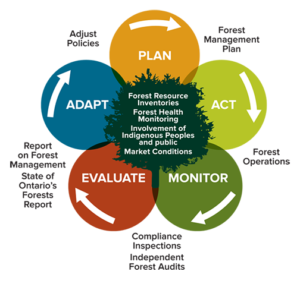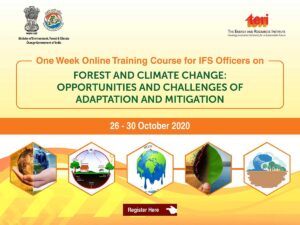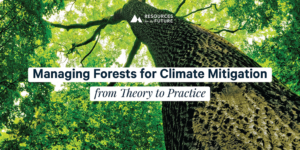
Climate change is one of the most pressing challenges of our time, impacting ecosystems, economies, and communities worldwide. One effective strategy to combat climate change is through community-based forest management (CBFM). This approach not only helps in reducing carbon emissions but also empowers local communities, enhancing their livelihoods and ensuring sustainable forest conservation. This article explores the critical role of CBFM in climate change mitigation, its benefits, and the steps needed to implement it effectively.
Understanding Community-Based Forest Management
Community-based forest management refers to the practice where local communities are involved in the stewardship and sustainable management of forests. This participatory approach ensures that the people who depend on forests for their livelihoods have a say in how these resources are managed and conserved. By involving communities, CBFM promotes the sustainable use of forest resources while protecting biodiversity and reducing deforestation rates.
The Role of CBFM in Climate Change Mitigation
- Carbon Sequestration: Forests act as carbon sinks, absorbing CO2 from the atmosphere and storing it in biomass and soil. CBFM helps in maintaining and enhancing these carbon stocks by preventing deforestation and promoting reforestation and afforestation activities.
- Reduced Deforestation: By giving communities ownership and responsibility over forest resources, CBFM reduces the pressures of deforestation driven by illegal logging, agricultural expansion, and other unsustainable practices. This results in lower greenhouse gas emissions from deforestation.
- Sustainable Livelihoods: CBFM promotes sustainable economic activities such as eco-tourism, non-timber forest product (NTFP) harvesting, and sustainable agriculture, providing communities with alternative sources of income that do not harm the forest ecosystem.
Benefits of Community-Based Forest Management
- Empowerment and Participation: CBFM empowers local communities by involving them in decision-making processes, giving them a sense of ownership and responsibility towards forest conservation.
- Biodiversity Conservation: CBFM promotes the conservation of biodiversity by protecting forest habitats from degradation and fragmentation. Healthy forests support diverse plant and animal species, contributing to ecosystem resilience.
- Poverty Alleviation: By creating sustainable livelihood opportunities, CBFM helps in poverty alleviation. Communities can benefit economically from the sustainable use of forest resources without compromising the health of the ecosystem.
- Cultural Preservation: Many indigenous communities have cultural and spiritual ties to forests. CBFM helps preserve these cultural heritage sites and practices, maintaining the cultural identity of these communities.
Implementing Effective CBFM
- Policy and Legal Frameworks: Governments need to establish supportive policies and legal frameworks that recognize and protect the rights of local communities over forest resources. This includes land tenure security and access rights.
- Capacity Building: Training and capacity-building programs are essential to equip communities with the knowledge and skills needed for sustainable forest management. This includes education on sustainable harvesting techniques, forest monitoring, and climate adaptation strategies.
- Participatory Approaches: Effective CBFM requires participatory approaches that involve all stakeholders, including community members, local authorities, NGOs, and researchers. This ensures that diverse perspectives are considered in decision-making processes.
- Monitoring and Evaluation: Regular monitoring and evaluation are crucial to assess the effectiveness of CBFM initiatives. This helps in identifying challenges, measuring progress, and making necessary adjustments to achieve desired outcomes.
- Financial Support and Incentives: Providing financial support and incentives to communities can encourage the adoption of sustainable practices. This can include payments for ecosystem services (PES), grants, and access to markets for sustainably produced goods.
Case Studies of Successful CBFM
- Nepal’s Community Forestry Program: Nepal’s community forestry program is a pioneering example of CBFM. It has successfully handed over forest management rights to local communities, resulting in increased forest cover, improved biodiversity, and enhanced community livelihoods.
- Mexico’s Ejido System: Mexico’s ejido system, where communities collectively manage land and forests, has demonstrated significant benefits in terms of forest conservation and sustainable development. Communities have been able to generate income through sustainable timber production and eco-tourism.
- Tanzania’s Participatory Forest Management: In Tanzania, participatory forest management has led to reduced deforestation and improved forest conditions. Communities have been actively involved in forest management plans, benefiting from sustainable use and conservation efforts.
Conclusion
Community-based forest management plays a crucial role in climate change mitigation by promoting sustainable forest conservation, reducing deforestation, and enhancing carbon sequestration. It empowers local communities, supports biodiversity conservation, and provides sustainable livelihood opportunities. For CBFM to be effective, it requires supportive policies, capacity building, participatory approaches, and financial incentives. By investing in and supporting CBFM, we can make significant strides in combating climate change while fostering sustainable development and community empowerment.


